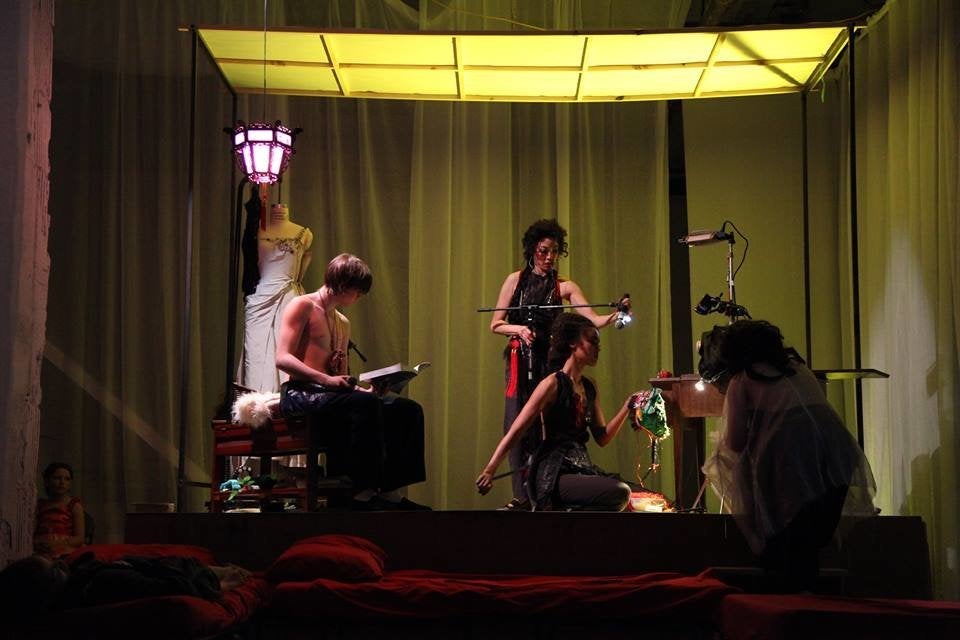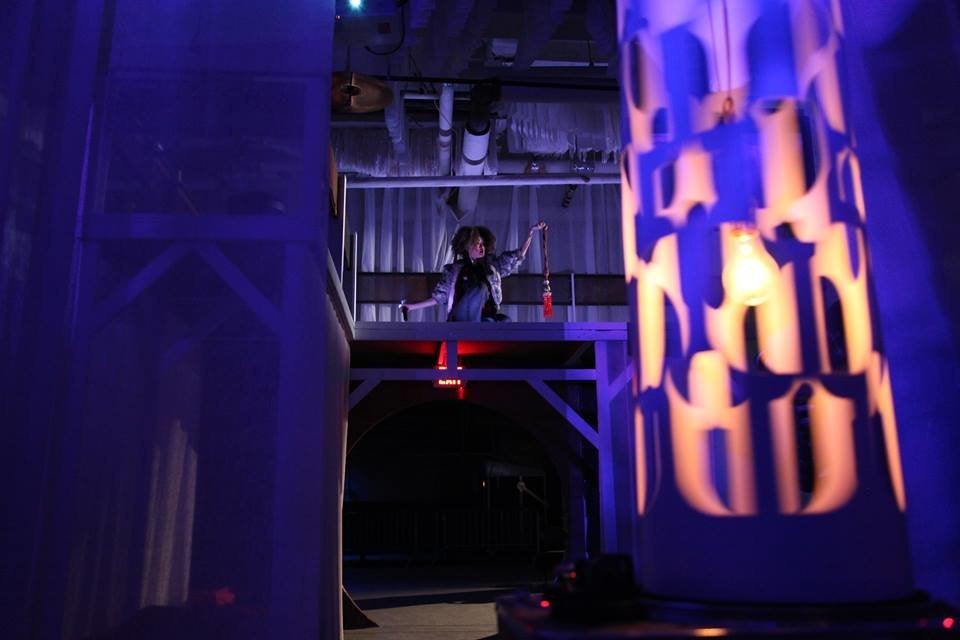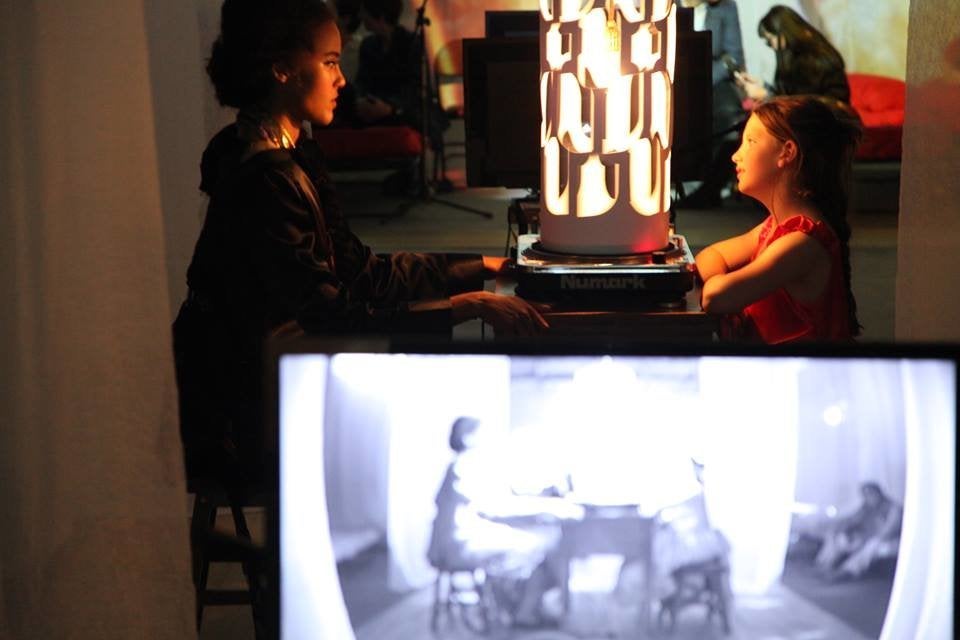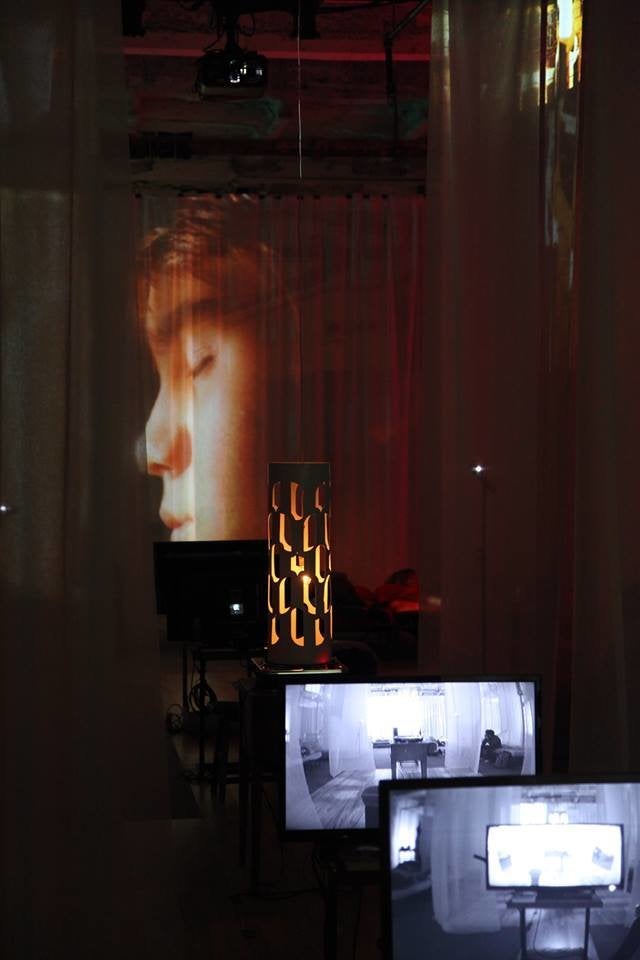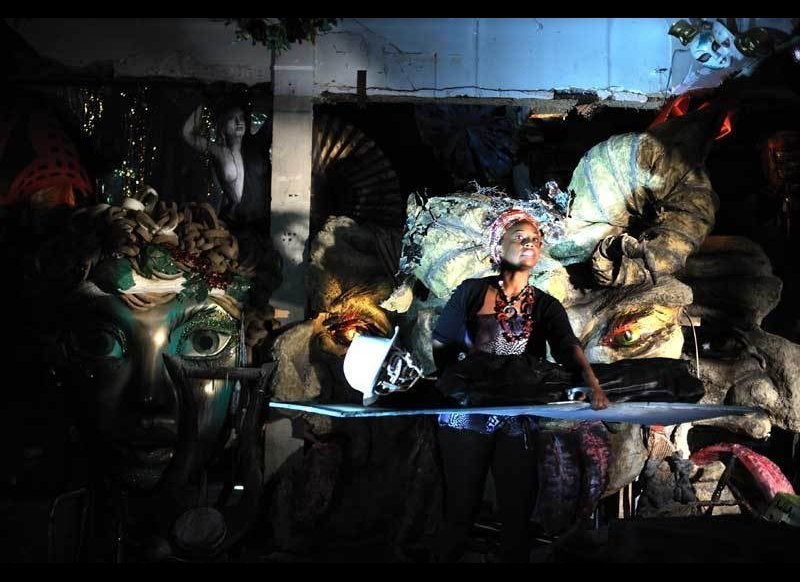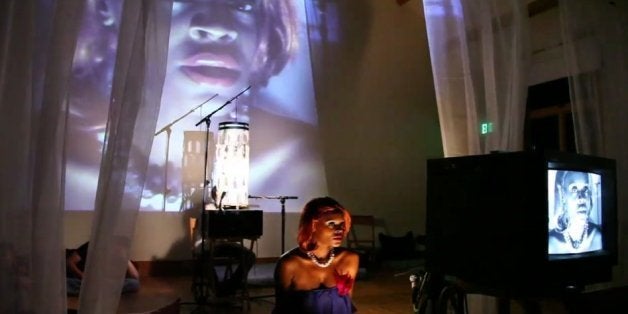
The theater, as magical and transformative as it can be, can also get a bit dry, and long, and sometimes, if we're being honest, a little boring. At times, this feeling of boredom is perceived as an almost necessary step to fully understanding and appreciating a theatrical performance. Yet, what if instead of pushing through the drowsiness until the glorious intermission and the snack bar that awaits, you were actually encouraged to fall asleep?
This is exactly the premise of "Dream of the Red Chamber," a durational performance installation that takes place somewhere between reality and a dreamland. The piece, conceived of and written by Jim Findlay and Jeff Jackson, immerses viewers in the tale of Cao Xueqin’s 18th century Chinese novel "Dream of the Red Chamber," framed by a fragmented series of hypnotic, metaphysical dreams. Dubbed a "literal dream play," the piece asks their viewers not to pay attention, allowing the performance to creep into the subconscious of the audience, scrambling notions of time and reality in the process.
The unconventional performance leaves a different impression on each individual audience member. Based on their respective levels of engagement, viewers may exit the theater anywhere from well-rested to completely transformed, or any of the myriad places in between. We reached out to Jim Findlay, who also directed the work, to learn more about the radical endeavor. Read on to learn about the play's de-linear storyline, comfy set and unconventional aims. At the very least, "Red Chamber" will allow you to act out your transgressive fantasies, as far as theater etiquette goes. At most, the piece could transform the way you expect to interact with a work of art.
The play is described as "an epic love story between a stone and a flower." Can you expand on the plot?
It's based on an 18th century Chinese novel of the same name. It's about a stone that the goddess Nüwa creates in order to repair a break in the sky. She makes 36,501 stones which is just a little too many. She casts a stone she's made down to the bottom of a mountain in the heavens. The stone falls in love with a flower in the heavenly realm, and waters that flower every day. This stone can walk around -- [laughs] it's heaven. That stone decides it wants to take a trip down to Earth to be reincarnated as human. The flower goes to the goddess who is in charge of these things and says that she also wants to go down to Earth because she owes the stone a debt of tears, because the stone had spent all the time watering and nurturing the flower. She decides to be reincarnated on Earth purposely to pay back her debt of tears to the stone. They are reincarnated as cousins in a politically connected family in the capital and basically they have a sort of romance. The story is largely the story of what happens down on Earth but its framed by the story of the stone and the flower.
What inspired you to encourage your audience members to fall asleep?
I am interested in work that defies the normal expectations of the attention that the audience is normally expected to pay. There is a long tradition of boredom as a device for achieving a heightened state of awareness, kind of meditatively. I'd also read this novel many, many years ago and had an idea that I wanted to do something with it. Then [a collaborator] told me: "If you're gonna make a piece for a sleeping audience that would be the perfect material." It's all about how our conscious life here on Earth is a feign, and there is another existence that is more real in our dream states. A little light went off in my head and in the course of three seconds it became an idea I was obsessed with.
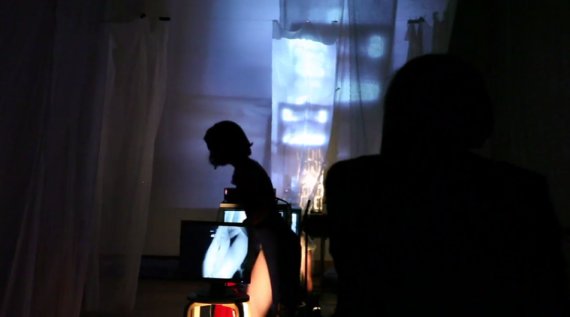
photo credit Joshua Higgason
Now the theater has replaced seats with beds, is that right?
The environment is sort of an installation. The beds are inside the space with performers and video projections, so you're immersed in this world and the world includes 40 beds. The audience is invited to use the beds to lie down and sleep or rest, close their eyes and see where the piece takes them. We operate the piece like you would any digital art installation; it's not like a typical theater show where there is a ticket and you show up at a particular time and you take your seat and then the show starts. We show it durationally, so the show starts at 5 p.m. and goes until midnight some days and from 5 p.m. to 6 a.m. others. People are invited to come and go as they please.
What kind of reactions have you seen to the piece thus far?
The piece is structured so there is no beginning, middle or end. The narrative happens over the course of the whole performance so you might come in 4 hours after its started and see the very beginning of the play, or you might come in at the very beginning just in time for the end. Things are structured in the piece like they're structured in our dreams, in a non-linear fashion.
The piece suggests the act of sleeping opens this territory of time travel. The most common response from people who do sleep is I fell asleep, I woke up again, I felt like maybe I'd slept for 45 minutes and I'd slept for 2 hours. Or they woke up and they'd completely lost track of time. It's very common that people wake up and are sure they'd seen things happen to the room that didn't really happen, or they'd believe they'd dreamed things up but they were really happening. There's an interesting confusion between where your mind wanders and the secondary elaboration of your subconscious mind. Our job as performers is to trigger these processes and not merely to deliver a clean story, per se. It's more about an experiential state of mind where the audience can create their own stories.
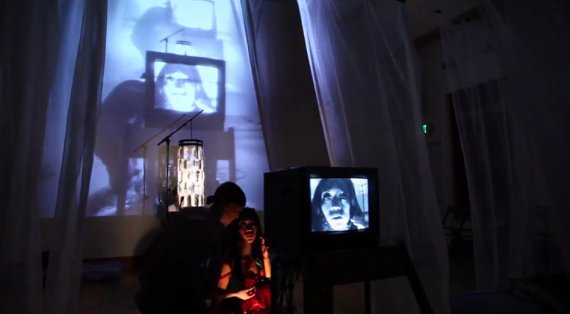
photo credit Joshua Higgason
Is there any wrong way to experience the play?
We prefer that you not pay any attention. One of the big things we found early on when we started doing research for this is once you disrupt that normal relationship between audience and performer, where the audience pays attention and the performer has a responsibility to be entertaining, once you disrupt that there's a whole new set of parameters that come into what it is to experience a work of art. The piece is a lot about creating a situation where the audience gets to think about how they experience art because they're being asked to experience it in a way that's so different than what they're used to.
There's absolutely no wrong way. I always fantasize that someone could come into the piece, be there for five minutes, absolutely get it and love it, evanesce in a Buddhist-type way into a higher consciousness and disappear from the planet. Or they might spend 12 hours and get really frustrated, but still get something out of it. I've had a lot of people say they've come and spent some time there, and they don't really feel the impact of the piece until they get back into the real world. The piece tends to live with you and pop up in ways you wouldn't expect. Because we're operating in a subconscious terrain, it seems like the piece lingers.
When you put it like that, it sounds like a poem.
It's definitely constructed like a poem more than other narrative forms. I think that's a good reference point. If the audience came in thinking of it as a song or a poem that would be good. We are trying to allow the audience to find their own entry point. It's not something where you get it or you don't get it. The more you engage the piece the more you get out of it.

photo credit Joshua Higgason
Findlay's "Dream of the Red Chamber" is presented by Times Square Arts in partnership with Allied Partners and Brickman Real Estate. It runs from May 9 until May 17, 2014 at the Brill Building in Times Square. Admission is free. Visit the website for details about the all night performances.
